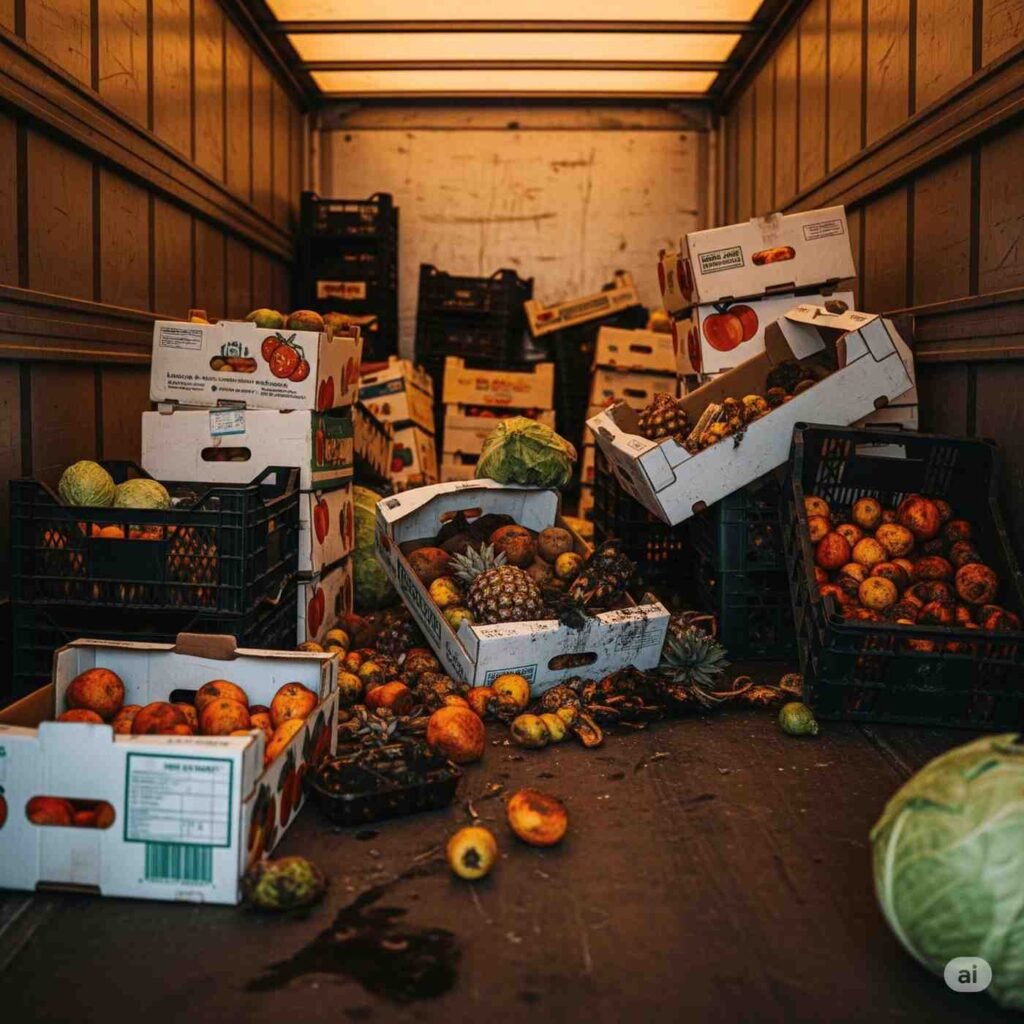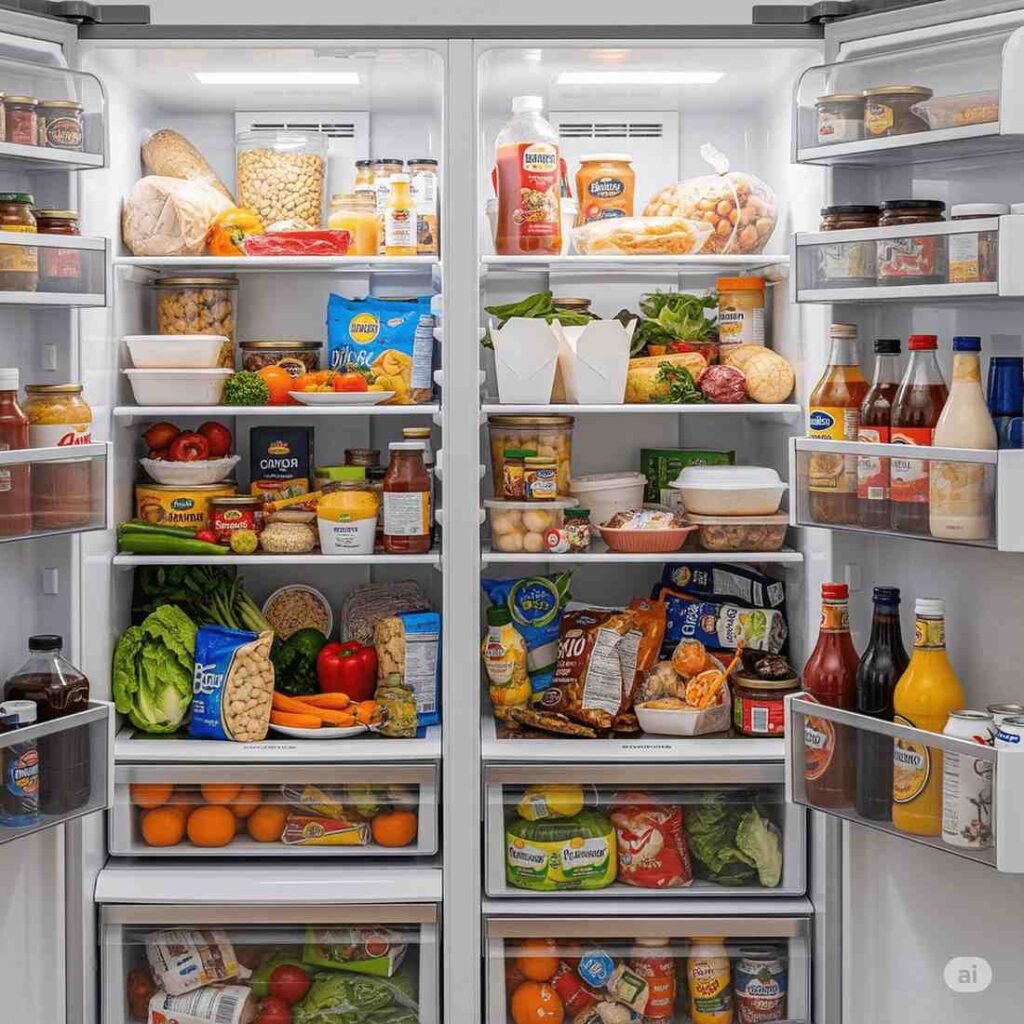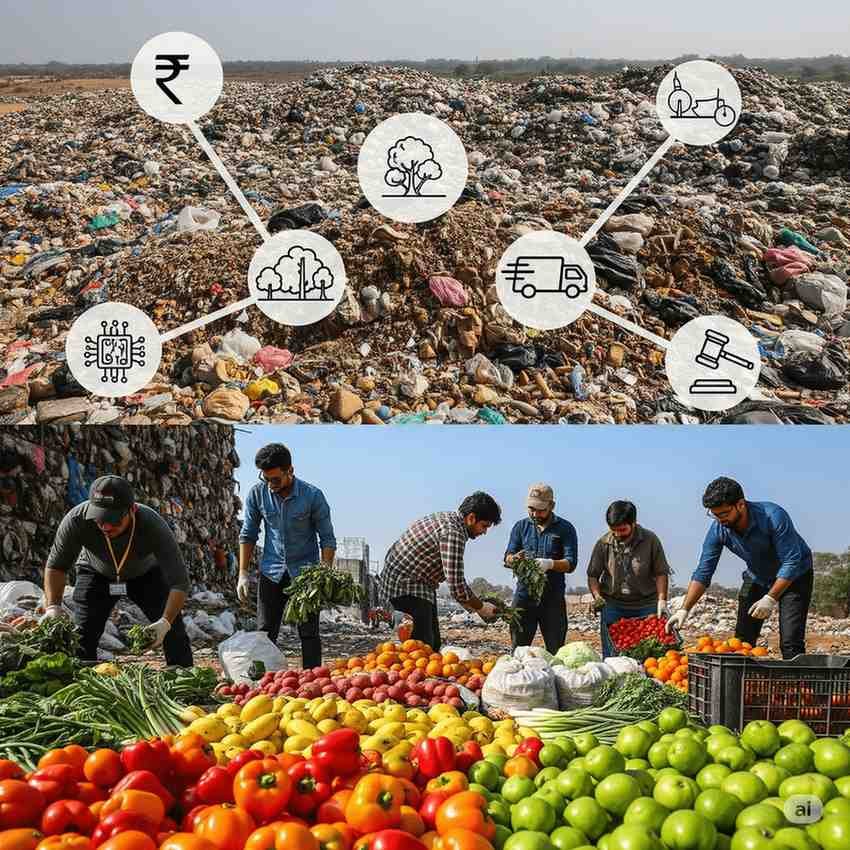Table of Contents
- Introduction: Why Food Waste Management Matters Now More Than Ever
- 1. Economic Challenges in Food Waste Management
- 2. Environmental Burden and Resource Depletion
- 3. Logistical and Infrastructural Limitations
- 4. Technological and Operational Hurdles
- 5. Policy, Regulatory, and Social Barriers
- 6. Consumer and Behavioural Patterns
- Final Thoughts: Tackling Food Waste Management Challenges Requires Collective Action
Introduction: Why Food Waste Management Matters Now More Than Ever
Food waste is more than just a lost meal—it’s a global crisis with deep economic, environmental, logistical, and social consequences. Around the world, millions of tonnes of edible food are discarded each year, even as millions of people go hungry. Tackling this issue effectively requires understanding and addressing the food waste management challenges that exist at every stage of the food supply chain.
From poor storage infrastructure and complex regulations to changing consumer behaviour and limited technology adoption, these challenges are deeply interconnected.
In this blog post, we explore the biggest barriers to sustainable food waste solutions—and what it takes to overcome them for a more circular and equitable food system.
Managing food waste effectively is not just about reducing landfill volumes—it’s about conserving resources, protecting the environment, and ensuring food reaches those who need it most. However, solving this problem is far from simple.
Stakeholders across the system face a host of food waste management challenges, ranging from lack of infrastructure and complex regulations to behavioural habits and financial roadblocks.
In this blog post, we’ll explore the biggest barriers to effective food waste management, highlight the impact of each, and discuss what it will take to overcome them.
1. Economic Challenges in Food Waste Management
One of the most pressing food waste management challenges is ensuring economic sustainability. Across the globe, billions of dollars are lost every year due to wasted food.
In the United States alone, the value of surplus food in 2023 reached a staggering $382 billion, with $338 billion resulting from avoidable food waste. This loss not only affects households but also significantly impacts the food industry, where food surplus was valued at $107 billion.
While innovative waste-to-value strategies—such as valorisation—offer promising economic opportunities, their success is highly dependent on the chosen conversion method.
For instance, anaerobic digestion (AD) for methane production can be less financially rewarding if limited to just heat and electricity generation. On the other hand, converting food waste into chemicals or high-value compounds can yield returns up to 10 times higher.
In countries like Canada, the financial strain is intensified by high disposal costs, with food waste amounting to $100 billion annually and $49 billion ending up in landfills or composting facilities. Municipal solid waste disposal fees there range from $90 to $242 per tonne, adding to the burden.
In contrast, low landfill tipping fees in the U.S. disincentivize investment in more sustainable solutions like organics recycling.
For food businesses, donating surplus food also brings hidden costs—such as handling and transportation—which are often not adequately offset by tax incentives. As a result, many choose disposal as the simpler, cheaper option.
Accessing financing for food waste reduction projects is another key hurdle. High upfront capital costs, uncertain returns, and the risk associated with adopting emerging technologies make investors cautious, especially in developing or underregulated markets.
2. Environmental Burden and Resource Depletion
Among the most urgent food waste management challenges is the environmental toll caused by discarded food. Globally, food waste is responsible for generating approximately 3.3 billion tonnes of greenhouse gas emissions (CO₂ equivalent) each year.
Much of this comes from methane, a highly potent greenhouse gas released as food decomposes in landfills.
But the environmental damage doesn’t end there. Every bite of food that goes uneaten also wastes the vast resources needed to produce it—including land, water, energy, and labor.
For example, the water used to grow surplus food in the United States alone could supply the entire water usage of California and Idaho combined.
Outdated disposal methods such as landfilling and incineration continue to pose serious threats. While easy to implement, they are among the least sustainable options.
Landfills can leak contaminants, polluting underground water reserves. Incineration may release dangerous pollutants such as dioxins and heavy metals, degrading air quality and harming ecosystems.
The true environmental footprint of food waste also depends on the type of food discarded and the treatment process used. For instance, high-carbon-footprint foods like meat or dairy contribute more to global warming potential when wasted.
Even valorisation techniques such as composting or energy recovery must be weighed for their environmental efficiency, especially when factoring in embodied emissions and long-term resource recovery.
3. Logistical and Infrastructural Limitations

One of the most persistent food waste management challenges, especially in developing countries like India, is the lack of reliable infrastructure for handling, storing, and transporting food.
Post-harvest losses and spoilage are common due to inadequate cold storage facilities, poor packaging systems, and limited connectivity between farms and markets.
Further down the supply chain, inefficiencies such as poor inventory control, disorganised distribution networks, and a lack of coordination among stakeholders continue to drive food waste across multiple stages—from farms to retailers.
Efforts to recover surplus food for redistribution and donation also face infrastructural hurdles. Many businesses lack the facilities needed to safely store food for donation, while food banks often struggle with insufficient storage capacity, limited labor, and lack of equipment—particularly when handling perishable goods like fruits, vegetables, and dairy.
Another overlooked challenge is the difficulty of removing packaging from discarded food.
Contaminated food packaging increases costs at recycling or composting plants and reduces the efficiency of food recovery. This packaging waste often ends up in landfills, undermining sustainable management practices.
Finally, logistical costs present a real barrier to sustainable food waste treatment. Transporting food waste to recycling or valorisation facilities is often more expensive than simply hauling it to a landfill, making it harder for waste haulers and food businesses to justify greener options economically.
4. Technological and Operational Hurdles
Technology plays a critical role in tackling food waste management challenges, but its implementation is far from straightforward.
One major issue lies in the nature of food waste itself—it typically has a high moisture content, low calorific value, and inconsistent composition, all of which reduce the efficiency of commercial-scale treatment methods like composting or energy recovery.
Processes such as anaerobic digestion (AD) are especially affected by these limitations. Components like lignin and lignocellulosic materials do not break down easily in anaerobic conditions, resulting in low methane yields unless additional pretreatment steps are applied—often increasing cost and complexity.
Even when such technologies are in place, achieving optimal operational performance requires advanced monitoring, automation, and process control—tools that are often out of reach for small- to mid-sized waste processors or local municipalities.
In the foodservice industry, forecasting food demand accurately remains a major operational barrier. Restaurants, hotels, and caterers often struggle with overproduction, especially in buffet-style or large-scale meal services.
This leads to significant waste, much of which could have been avoided with better planning and analytics.
Another overlooked challenge is the reliance on manual food waste audits. These are labour-intensive, time-consuming, and prone to errors—making it difficult for kitchens and foodservice operators to understand the true volume and type of waste they generate.
Without the aid of smart waste tracking tools or AI-based systems, identifying patterns and solutions becomes a guessing game rather than a data-driven strategy.
5. Policy, Regulatory, and Social Barriers
A less visible but equally critical dimension of food waste management challenges lies in the realm of policy, regulation, and public perception.
For businesses operating across multiple regions, the fragmented nature of food safety and health regulations—which can vary significantly between cities, states, or countries—makes it difficult to adopt uniform food donation strategies.
Even where federal legal protections exist—like the Good Samaritan Food Donation Act in the United States—many food donors remain either unaware of these laws or hesitant due to concerns about liability and public image.
Misconceptions about the risks of donating surplus food often discourage businesses from participating in redistribution programs, despite the minimal legal risk involved.
In many areas, community resistance—commonly referred to as “Not In My Backyard” (NIMBY) sentiments—also slows progress.
Residents may oppose the establishment of composting or anaerobic digestion facilities over fears of odour, pests, or increased truck traffic, making permitting and siting a major obstacle for local governments and private operators.
A more systemic issue is the misalignment of incentives across the food supply chain. A business may bear the cost of implementing a waste-reduction initiative, but the environmental or reputational benefits may fall elsewhere—such as to logistics providers, NGOs, or municipalities. This disconnect often discourages private investment in food waste solutions.
Finally, building long-term, stable recycling infrastructure depends heavily on predictable feedstock supply. However, recycling or valorisation facilities often struggle to attract financing because cities and businesses hesitate to sign long-term contracts, fearing price volatility or regulatory changes.
This creates a catch-22—without stable supply contracts, projects can’t get funded; without infrastructure, supply remains fragmented.
6. Consumer and Behavioural Patterns

Human behaviour plays a powerful role in shaping the landscape of food waste management challenges, especially at the household and consumer levels.
In homes around the world, food is routinely wasted due to poor planning, impulse buying, and a lack of awareness around proper storage techniques.
Bulk deals and “buy one, get one” offers may seem economical, but often lead to over-purchasing, especially when consumers aren’t equipped to store or use food efficiently.
A major factor in premature disposal is the widespread confusion over date labels. Misunderstanding the difference between “best before” and “use by” often results in safe, edible food being thrown out. Many consumers err on the side of caution, discarding items long before they are actually unsafe to eat.
Upstream in the supply chain, consumer preferences for cosmetically perfect produce, low prices, and convenience indirectly drive waste.
Farms may leave perfectly edible fruits and vegetables unharvested simply because they don’t meet aesthetic standards set by retailers or consumer expectations.
In the foodservice sector, plate waste—food left uneaten by customers—makes up to 70% of total food waste, especially in buffet-style restaurants and catering services.
Cultural norms also play a part; in many countries, serving excess food during social events or celebrations is seen as a sign of hospitality, leading to unnecessary surplus and spoilage.
Tackling behavioural drivers of waste requires education, awareness campaigns, and policy-level interventions to change attitudes and habits, both at the individual and institutional levels.
Final Thoughts: Tackling Food Waste Management Challenges Requires Collective Action
Addressing the many food waste management challenges outlined above demands more than isolated solutions. These challenges are deeply interconnected—economic inefficiencies influence logistics, consumer behaviour impacts supply chains, and policy gaps hinder technology adoption.
To move forward, a transdisciplinary approach is essential—one that brings together policymakers, producers, retailers, nonprofits, and consumers in a united effort.
Only through collaboration can we build a resilient, sustainable, and circular food system where waste is minimized, resources are conserved, and surplus food is redirected to those who need it most.
Join the Movement
Whether you’re a food business, a logistics provider, or an individual committed to change, your actions matter. At Reshine Organisation, we work tirelessly to bridge the gap between surplus and scarcity.
Partner with us to implement food waste solutions
Donate now to support food recovery and redistribution
Spread awareness—share this post and start the conversation
Together, we can turn waste into opportunity.




